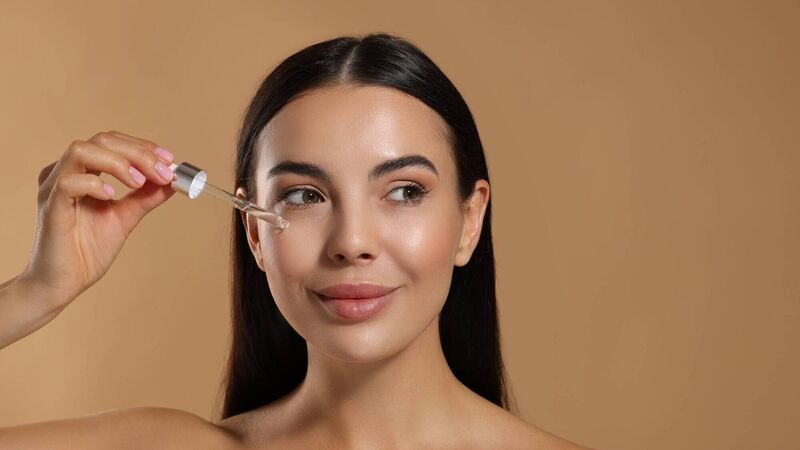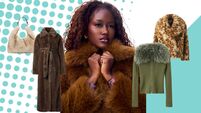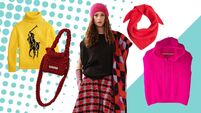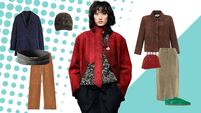The Skin Nerd: How to overcome the ‘retinol scaries’

The Skin Nerd: The lowdown on skin purging and why it’s a perfectly normal stage of using vitamin A.
Coined as ‘retinol scaries’ on TikTok, skin purging is an extremely common but slightly unpleasant side effect of using retinol – but does it mean that we need to stop using retinol altogether? Not typically...
Although this depends on your individual situation and the status of your skin purging, this stage of acclimatation is expected and whilst it seems wrong to suggest that you get comfortable with discomfort, what matters here is the level of discomfort and severity of any irritation.
As ‘Retinol scaries’ has been trending on TikTok, I take it as my duty to use this column to share my insight on the importance of not giving up too hastily...
YES! Retinol is a derivative of vitamin A and the most celebrated skincare ingredient when it comes to creating documented change in the skin.
Most benefits centre around anti-ageing and include lessening fine lines and wrinkles, boosting collagen production and addressing age spots and pigmentation, but retinol also helps to balance oily skin, increase radiance and improve clarity!
Retinol works by boosting cell renewal. As we age, our skin’s ability to renew itself slows and vitamin A is one of the few ingredients able to stimulate this process.
Derivatives vary in potency of vitamin A, but all can cause a degree of skin purging and this is because it is powerful enough to spur a change in the skin and is actually a sign that it is working to begin to deliver some of those benefits we spoke about above.
Whilst your skin acclimatises and gets used to the ingredient, you may find that your skin experiences flakiness, dry patches, peeling, redness and mild irritation – known as retinisation or a retinoid response.
Not everyone experiences a retinoid response, but if you do, it should be temporary and only occur whilst your skin is adjusting to the new ingredient and rate of skin renewal.
If you decide to increase the percentage of retinol in the future, this may also happen again until you have readjusted – highlighting the importance of a slow and gradual approach!
• Use simple, hydrating products rich in ceramides and peptides -- these can help build up your skin barrier.
• Use hydrating cleansers that are fragrance-free and alcohol-free. You want to keep stripping products and irritants out of your skincare routine.
• Use topical niacinamide (vitamin B3). Niacinamide has been proven to help reduce retinoid irritation. You can use retinoid and niacinamide separately or buy combination products designed for reducing side effects.
• Moisturiser is going to be your best friend here. In the morning, choose something light with humectants like hyaluronic acid. At night, a heavier, nourishing cream is ideal.
• Take sun protection seriously. Retinoids make skin more photosensitive and sun damage can further irritate your skin during the retinisation process. Use a daily SPF of 30 or higher.
• Know when to back off the retinoid. If you’re experiencing a lot of irritation, back off the retinoids and switch to a more skin barrier boosting and nourishing approach for the time being. Give your skin some time to recover.
• If you are waxing (including eyebrows) or having a laser treatment, stop using retinol three days prior to laser start again 24 hours after however always check with the salon or consultant.
If you are experiencing any pain or more than mild irritation, discontinue use and speak to your doctor before deciding whether to continue.
Always following the product instructions for usage: This is crucial. I can tell you to avoid daily usage (at least to start with) but the product manufacturer will have detailed the exact timings for usage on the products packaging.
If unsure, do call customer services and find out before using it.
Stick to evening use: Retinol is not photostable meaning it degrades in the natural sun. We would advise that you only use retinol in your night-time routine.
If you do want to use retinoids in the morning incorporate retinyl palmitate into your routine.
If you want to increase your level of retinol, do so slowly: I advise you to use one percentage of retinol for 3 skin cycles approx. 3 months.
This will enable the skin to acclimatise to that level. If you have had no issues such as redness, dryness or tenderness then you should be ok to move on to a higher level.
Do be cautious when moving on to a new level and incorporate once or twice weekly initially before building up to daily use.
Use a daily SPF of 30 or higher: Retinoids make skin more photosensitive which can lead to sun damage, so always apply a daily SPF of at least 30 and remember to reapply every 2 hours during the day.
Nerdie note: Although retinol is beneficial for all skin types, it is not recommended for use when pregnant.
Skingredients Retinol 0.6% + B3 Anti-Ageing Night Serum (€49, skingredients.com and leading pharmacies) which blends pure, encapsulated retinol with vitamin B3 (niacinamide), hyaluronic acid and humectants to deliver 10 benefits including addressing fine lines, pigmentation and loss of collagen.
NeoStrata Potent Retinol Complex (€51.96, theskinnerd.com, neostrata.ie, lookfantastic.com) also contains nourishing centella asiatica to soothe and balance reactive, dehydrated skin while protecting against drying environmental aggressors.







